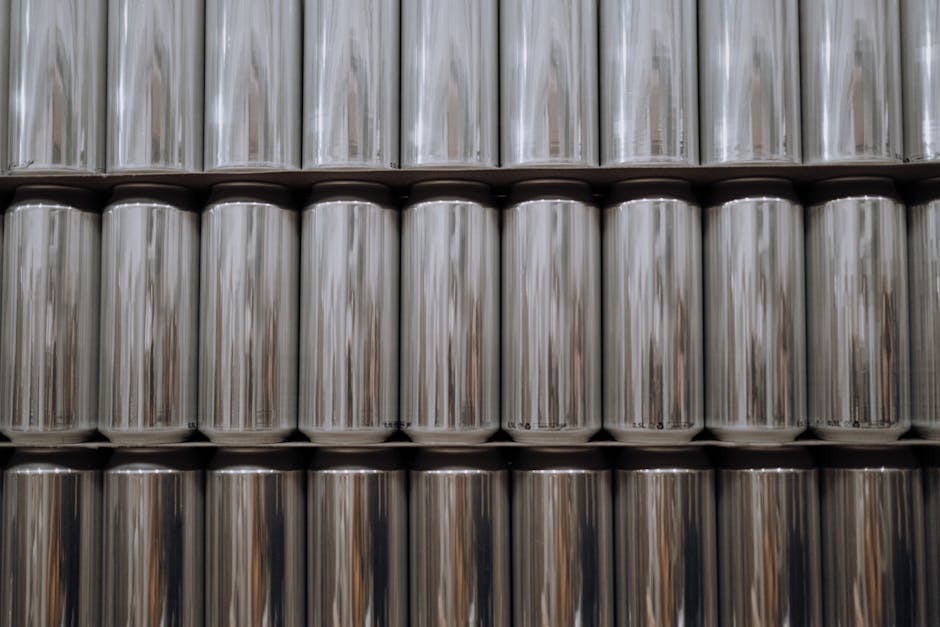The Importance of Eco-Friendly Manufacturing
Did you know that manufacturing contributes to nearly 20% of global carbon emissions? that’s a huge number! As we face climate change and environmental issues, eco-friendly manufacturing is more important than ever. But why should we care? Lets explore the reasons behind this crucial shift.
What is Eco-Friendly Manufacturing?

Eco-friendly manufacturing involves creating products in a way that reduces harm to the environment. This can mean using renewable resources, reducing waste, and minimizing energy consumption. The goal is to produce goods while protecting our planet for future generations.
Why Should We Care About Eco-Friendly Manufacturing?

Many of us want to live in a cleaner world. Here are a few key reasons why eco-friendly manufacturing matters:
- Protecting the Environment: Reducing pollution helps keep our air and water clean.
- Conserving Resources: Using fewer raw materials means we preserve natural resources for the future.
- Promoting Health: Eco-friendly practices can lead to safer, healthier products for consumers.
- Boosting the Economy: Green jobs are on the rise, providing new opportunities for workers.
How Does Eco-Friendly Manufacturing Work?

Eco-friendly manufacturing uses various methods to reduce environmental impact. Heres how:
- Renewable Energy: Companies use solar, wind, or hydro power instead of fossil fuels.
- Recycling and Upcycling: Materials are reused to reduce waste. For example, old plastic bottles can become new clothing.
- Sustainable Sourcing: Companies choose materials that come from renewable sources. Bamboo, for instance, grows quickly and can be harvested sustainably.
These methods not only help the environment but also often lead to cost savings for companies. When businesses use less energy and materials, they lower their expenses.
Are Eco-Friendly Products Really Better?

Many consumers wonder if eco-friendly products perform as well as traditional ones. The answer is yes! In fact, here are some examples:
- Eco-Friendly Cleaning Products: These use natural ingredients that are effective and safe for your home.
- Reusable Bags: They last longer and reduce plastic waste compared to single-use bags.
- Energy-Efficient Appliances: These save electricity and lower utility bills.
Plus, many consumers are willing to pay a bit more for products that are better for the planet. In a recent survey, 66% of respondents said they would pay extra for sustainable brands.
What Are Some Misconceptions About Eco-Friendly Manufacturing?
Despite the benefits, some misconceptions still exist. Lets clear them up:
- it’s Too Expensive: Many eco-friendly practices can save companies money in the long run.
- Eco-Friendly Means Lower Quality: As mentioned, many green products perform just as well as traditional ones.
- Only Big Companies Can Go Green: Small businesses can also adopt eco-friendly practices.
Understanding these misconceptions can help more people support eco-friendly initiatives.
How Can Consumers Support Eco-Friendly Manufacturing?
Consumers play a vital role in supporting eco-friendly manufacturing. Heres how you can help:
- Choose Green Products: Look for items labeled as eco-friendly or sustainable.
- Reduce, Reuse, Recycle: Practice these three R’s to minimize waste.
- Support Local Businesses: They often use local materials and have a smaller carbon footprint.
- Educate Others: Share what you learn about the benefits of eco-friendly manufacturing.
Every little action counts! When you choose eco-friendly options, you send a message to companies about what matters to you.
What Are the Trends in Eco-Friendly Manufacturing?
The world of eco-friendly manufacturing is always evolving. Here are some exciting trends:
- Circular Economy: This model keeps products and materials in use longer, reducing waste.
- Smart Manufacturing: Technology helps companies become more efficient and cut down on waste.
- Biodegradable Materials: More companies are exploring alternatives that break down naturally.
These trends show that the future of manufacturing can be both innovative and sustainable.
What Role Does Technology Play?
Technology is a game-changer in eco-friendly manufacturing. Here are a few ways it helps:
- Energy Management Systems: These monitor energy use and identify savings.
- 3D Printing: This reduces waste by creating products layer by layer.
- Data Analytics: Companies can track their environmental impact more accurately.
By embracing technology, manufacturers can produce better products with less environmental harm.
What Are Real-Life Examples of Eco-Friendly Manufacturing?
Many companies are leading the way in eco-friendly practices. Here are a few examples:
- Patagonia: This outdoor clothing brand uses recycled materials and promotes sustainability.
- Unilever: They are committed to reducing their carbon footprint and using sustainable sourcing.
- Interface: A carpet tile manufacturer that aims for a zero environmental footprint by 2020.
These brands show that being eco-friendly can go hand in hand with business success.
Conclusion: What Can We Do Today?
The importance of eco-friendly manufacturing cannot be overstated. It helps protect our planet, conserves resources, and promotes healthier products. Whether you’re a consumer or a business owner, you can make a difference.
Start by making small changes in your buying habits. Support companies that prioritize sustainability. Encourage local businesses to adopt eco-friendly practices. Together, we can create a greener future!
Want to dive deeper into eco-friendly living? Check out our post on Eco-Friendly Living Tips.
